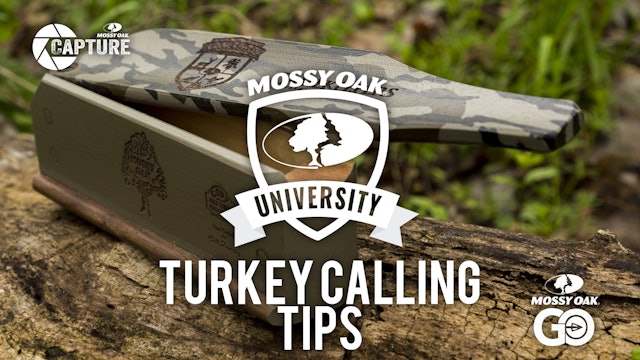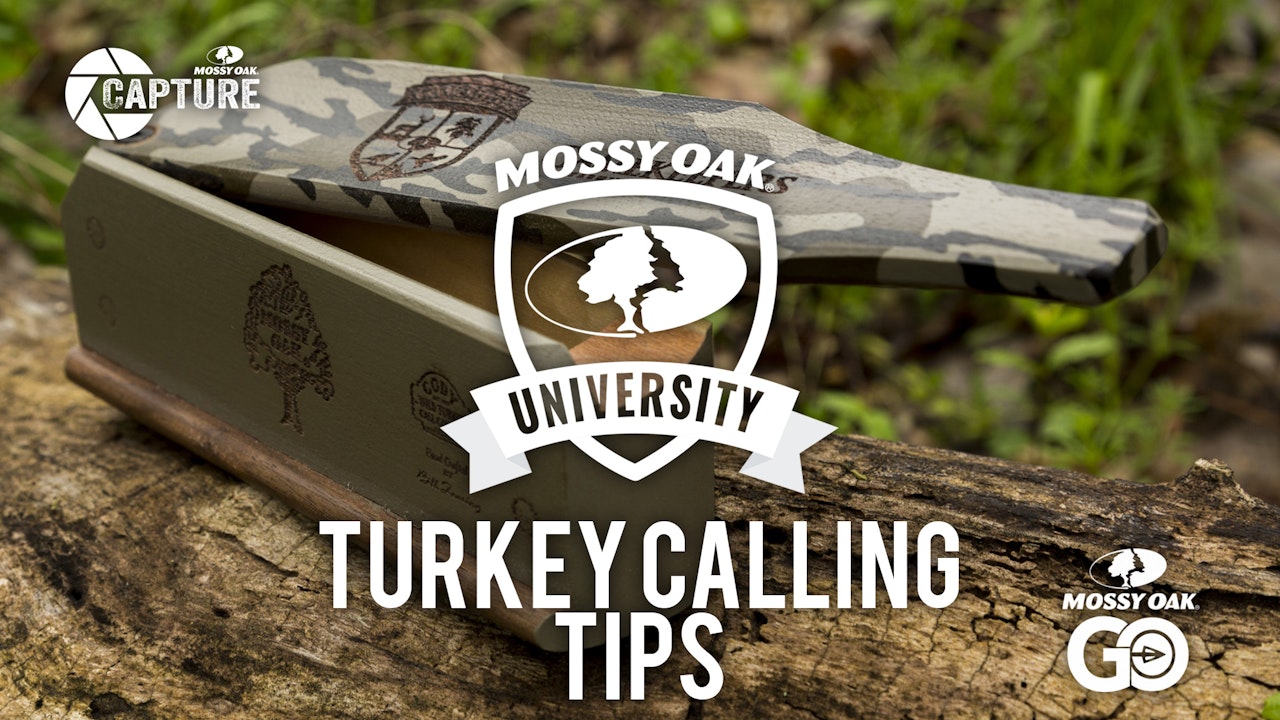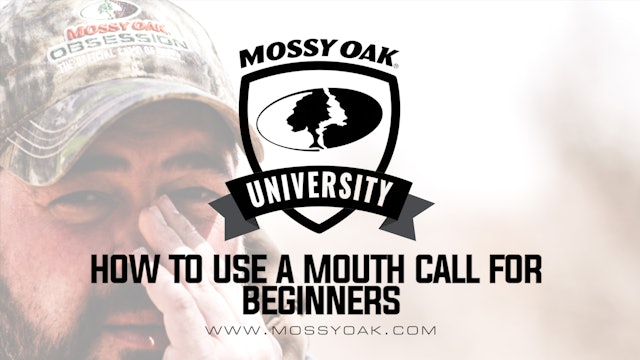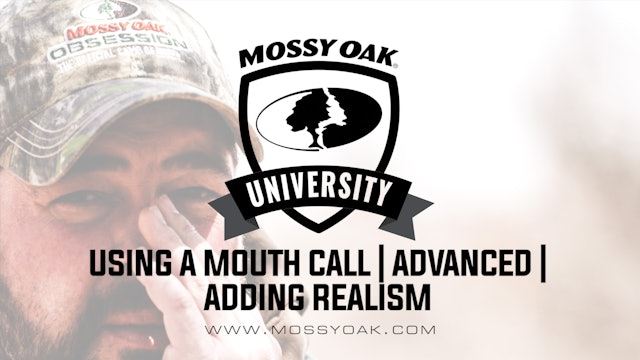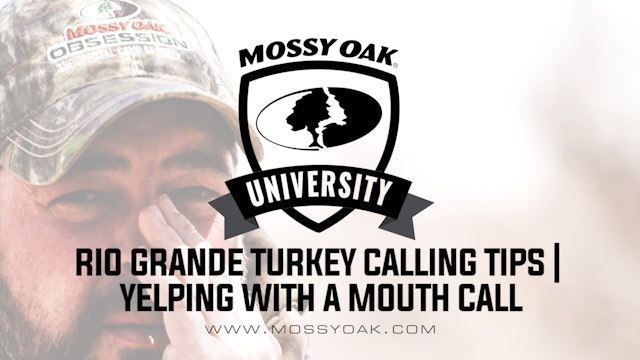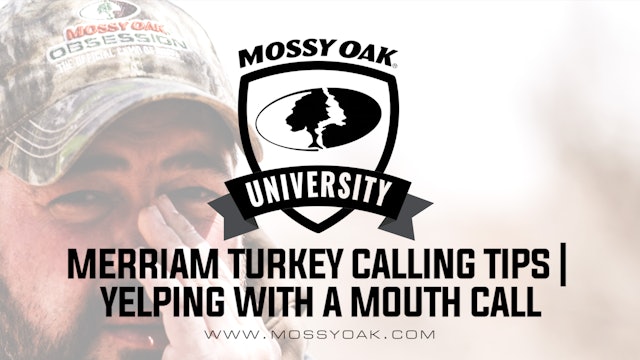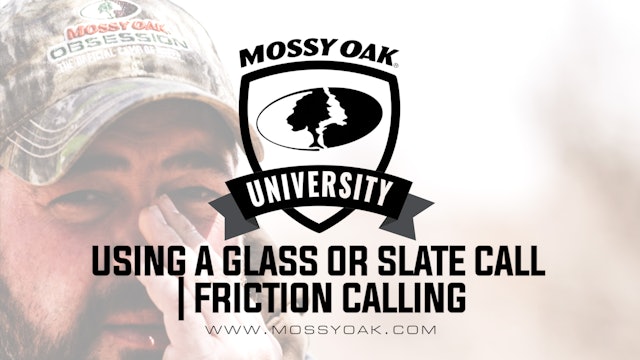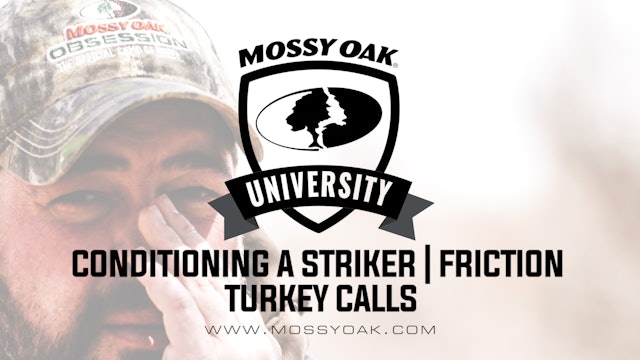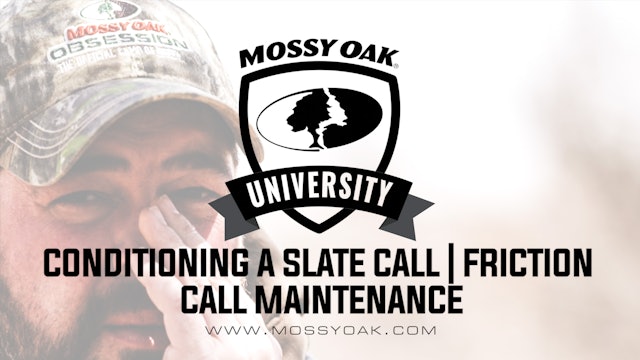-
Josh Grossenbacher Turkey Calling • Audio Sequence
Episode 1
Once you’re able to produce consistent sound with a mouth call, begin working on the variations of calls that wild turkeys make, clucks, cuts and yelps, for example. You want to be able to mimic the sounds a hen makes, which are varied in style and volume. Slight variations in your calling can ma...
-
How to Use a Mouth Turkey Call for Beginners
Episode 2
There are three parts to a diaphragm or mouth call: the tape, the frame and the latex reed. The mouth call goes in tape end first and reed facing outward. Rest the call on your tongue and press it to the roof of your mouth to create a seal with your palate. Pushing air through the call causes the...
-
How to Use a Mouth Call • Advanced • Adding Realism
Episode 3
Once you’re able to produce consistent sound with a mouth call, begin working on the variations of calls that wild turkeys make, clucks, cuts and yelps, for example. You want to be able to mimic the sounds a hen makes, which are varied in style and volume. Slight variations in your calling can ma...
-
When to Soft Call to Turkeys • Yelps, Clucks, and Purrs
Episode 4
Once you have a turkey’s attention, you need to change your calling. Yelps, clucks and purrs with the soft calling technique can help coax the gobbler to come to you.
-
Best Eastern and Osceola Wild Turkey Calling Tips • Basic Sequence
Episode 5
How to strike up a gobbler in different regions can vary. When trying to locate an Eastern, start yelping and build into cuts to try and pull the gobble out of the tom. Keep the series brief so you can listen for the gobbler’s return call. Osceola turkeys are very similar. Begin with hard, aggres...
-
Rio Grande Turkey Calling Tip • Yelping with a Mouth Call
Episode 6
Rios are less aggressive with hens than the Eastern and Osceola gobblers. To strike a Rio Grande, strictly yelp, both clear and raspy tones. Increase the volume of your calling to cover ground to try to pull the gobble out of the turkey.
-
Merriam Turkey Calling Tip • Yelping with a Mouth Call
Episode 7
Merriam’s hens don’t have as sharp of a cut as other subspecies of turkey hens. It’s more of a popping or pit sound. Listening to real Merriam’s hen calls helps identify the difference in their calls versus other subspecies. To produce the pit sound, Grossenbacher blows the air through the side o...
-
How to use a Glass or Slate Turkey Call • Beginner Friction Calls
Episode 8
Slate or pot style calls are a type of friction turkey call. It has two pieces, a slate or glass “pot” and a striker. Hold the striker like a pencil and flip the top end away so the striker is at an angle moving back towards you. Create a yelp by making a small circle, oval or diagonal motion wit...
-
How to Condition a Turkey Call Striker • Friction Call Maintenance
Episode 9
Keep your striker tip clear of any debris or dirt that may have built up on the tip. Some pot calls have a hole that serves just that purpose. If your call does not have a built-in striker cleaner, just take some sandpaper and sand off any build up. Taking care of your calls is important for crea...
-
How to Condition a Slate Turkey Call • Friction Call Maintenance
Episode 10
You always want to make sure your call surface is conditioned properly for effective calling. On a slate surface, Scotch-Brite™ will remove moisture, oil or smoothness from the plate that may affect the striker movement and friction.

